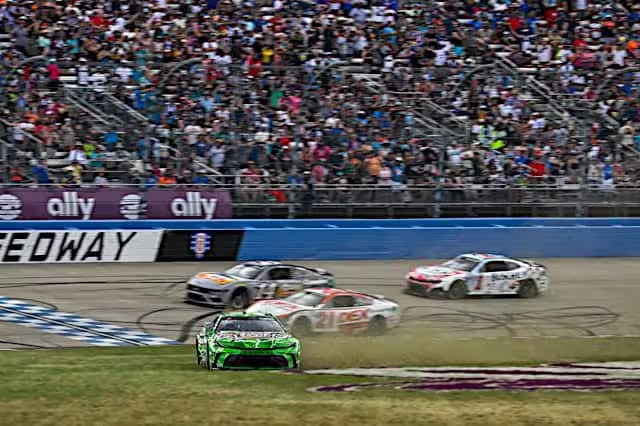After Sunday’s (June 30) five-overtime ending to the Ally 400 at Nashville Superspeedway, some watching were left wondering how much overtime was too much, with some calling for NASCAR to change the rules to limit the number of late restarts in races.
Why?
If you didn’t see Sunday’s race, Austin Cindric and Noah Gragson tangled just before the white flag. Under current NASCAR rules, because leader Denny Hamlin had not taken the white, the incident forced a restart.
And from there, chaos ensued.
So, how about that overtime?
Though it hasn’t always been called “overtime,” NASCAR has had some kind of rule in place since mid-2004 that ensures at least one attempt to end every race under a green flag. Prior to that, NASCAR Cup Series races ended at the scheduled distance, regardless of whether under green or yellow flag conditions, unless weather cut it short.
Pointing to some other series, including the Craftsman Truck Series, which would restart races in an attempt to finish under green, fans clamored for the same in the Cup Series.
NASCAR instituted the new rule at New Hampshire Motor Speedway in July of 2004. Cars would make one attempt at a two-lap “green-white-checkered” finish: cars would take the green flag, then the white signaling one lap to go on the next time by the start-finish line, with the checkered flag ending the race. If the caution flew at any point during the attempt, the field would be frozen and the race would end under yellow.
The first time the rule came into play in the Cup Series was the 2004 Brickyard 400, and there was a lot to take away from that first time. There was no lead change on the green-white-checkered; Jeff Gordon led at the start and led both laps to win. The GWC only added one lap to the total distance, as the race restarted on what would have been the white-flag lap.
While runner-up Dale Jarrett couldn’t challenge Gordon, who won his fourth Brickyard 400, there was hard racing for position in the pack. Fans saw the race end under green, which was what everyone hoped for. Below is the two-lap run.
But a few drivers’ finishes were adversely affected by the restart: Casey Mears and Ricky Rudd had flat tires (Rudd has his right-front fender heavily damaged) and Mark Martin’s engine let go on the final lap.
The risk of that, though, was part of the reward. The GWC was popular with a lot of fans…
Click Here to Read the Full Original Article at …

